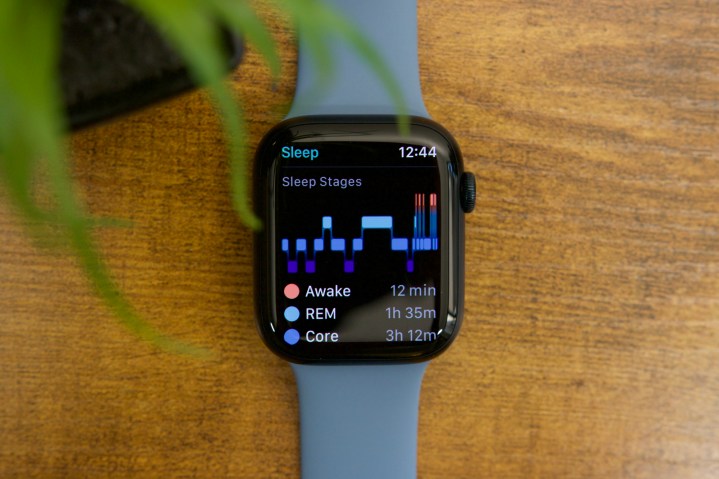
Long-standing rumors point to the 2024 Apple Watch being truly special in a few ways. A new design is one of the hot rumors, but it seems Apple wants to make another health-centric leap by allowing the smartwatch to read blood pressure and also look for signs of sleep apnea.
According to Bloomberg, the next Apple Watch will come equipped with a new sensor that will measure variations in blood pressure. A successor slated for arrival in 2025 could measure the exact systolic and diastolic blood pressure values.
To start, it seems Apple is taking a cautious approach. The feature has reportedly been in development for around a decade now, per a Bloomberg investigation, but it seems like the 2024 Apple Watch will finally offer the capability to buyers.
The idea here is that the watch will look for any abnormal fluctuations in blood pressure and will accordingly inform users. Think of it like an early warning, which a person can then share with their doctor to see if they are at risk of any serious issues.
Blood pressure sensing would apparently follow the same kind of early warning pattern as AFib detection on Apple Watches capable of electrocardiogram (ECG) sensing. Apple won’t be the first to the party, though.

Xiaomi recently launched the Xiaomi Watch H1, which is capable of blood pressure measurement using a micropump array fitted inside the strap. The company has even received the Food and Drug Administration approval for it as a Class II medical device. Samsung also offers a blood pressure measurement ability on the Galaxy Watch 6. The Huawei Watch D was the first to offer this feature on a mass-market device.
Interestingly, Apple also explored a band-based approach similar to that of Xiaomi and Huawei. Bloomberg claims that Apple was once testing a blood pressure sensor fitted inside the strap without the need for inflating it. It was reportedly the brainchild of famed former Apple designer Jony Ive.
“The company prototyped watch straps with sensors that gather data from the underside of the wrist and researched both a bed-mounted sleep tracker and a nightstand device with sensors to monitor users overnight before pushing the technology into the watch itself,” the Bloomberg report stated.
Also on tap is the ability to detect signs of disorders such as sleep apnea. The Apple Watch already offers a pretty comprehensive sleep analysis system, but it doesn’t delve into the realm of medical assistance for serious sleep issues.

According to Bloomberg, the sleep apnea detection system will rely on sleep as well as breath patterns to look out for signs of breath apnea. It’s not a proper diagnosis, but a broad estimation. Based on what it infers from the data, the upcoming Apple Watch will accordingly suggest users visit a doctor.
According to the American Academy of Sleep Medicine, approximately 5.9 million American adults are diagnosed with obstructive sleep apnea (OSA), while nearly 23.5 million remain undiagnosed. The cost of diagnosed OSA runs around $2,100 per person, while for an undiagnosed case, it is estimated to reach over $6,300 for each individual.
Apple has a chance to capitalize on this health gap with its characteristically smooth execution, similar to the way it implemented features like AFib detection and fall detection.
Editors’ Recommendations

